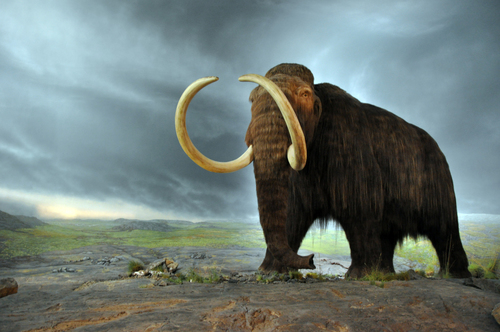
Woolly Mammoth
The iconic Woolly Mammoth, with its thick fur coat and massive, spiraled tusks, roamed icy landscapes of the Pleistocene. As a keystone species, it shaped the tundra ecosystems, fostering biodiversity. Its adaptation to harsh cold climates remains a marvel of evolutionary ingenuity.
Brown, Black, Tan
Color
Characteristics
The Woolly Mammoth (Mammuthus primigenius) was renowned for its long, shaggy fur, curved tusks, and large size, adapted for cold Ice Age environments. It primarily inhabited the tundra and steppe regions of Eurasia and North America, playing a crucial role in grazing and maintaining these ecosystems.
Distribution Range of the Woolly Mammoth
The woolly mammoth (Mammuthus primigenius) was primarily native to the northern regions of North America, Europe, and Asia. Their geographical distribution included the tundra and steppe regions covering parts of modern-day Russia, Canada, Alaska, and northern Europe, extending as far south as the northern United States, central Europe, and northern China during the last Ice Age.
Woolly Mammoth's Habitat
Environmental Conditions
Woolly mammoths thrived in cold, dry environments typical of the Pleistocene epoch's 'mammoth steppe'. This habitat was characterized by vast expanses of grasslands with sparse tree cover, low temperatures, and low annual precipitation, resembling the modern-day tundra and steppe ecosystems.
Ecological Niche
As herbivores, woolly mammoths adapted to grazing on grasses, sedges, and herbs in these open steppe environments. Their large size and thick fur were adaptations to the cold climate, while their long tusks were used for foraging under snow and ice to access vegetation. They played a significant role in the ecosystem by influencing vegetation structure through their grazing patterns.
Copyright @ Nature Style Limited. All Rights Reserved.
 English
English